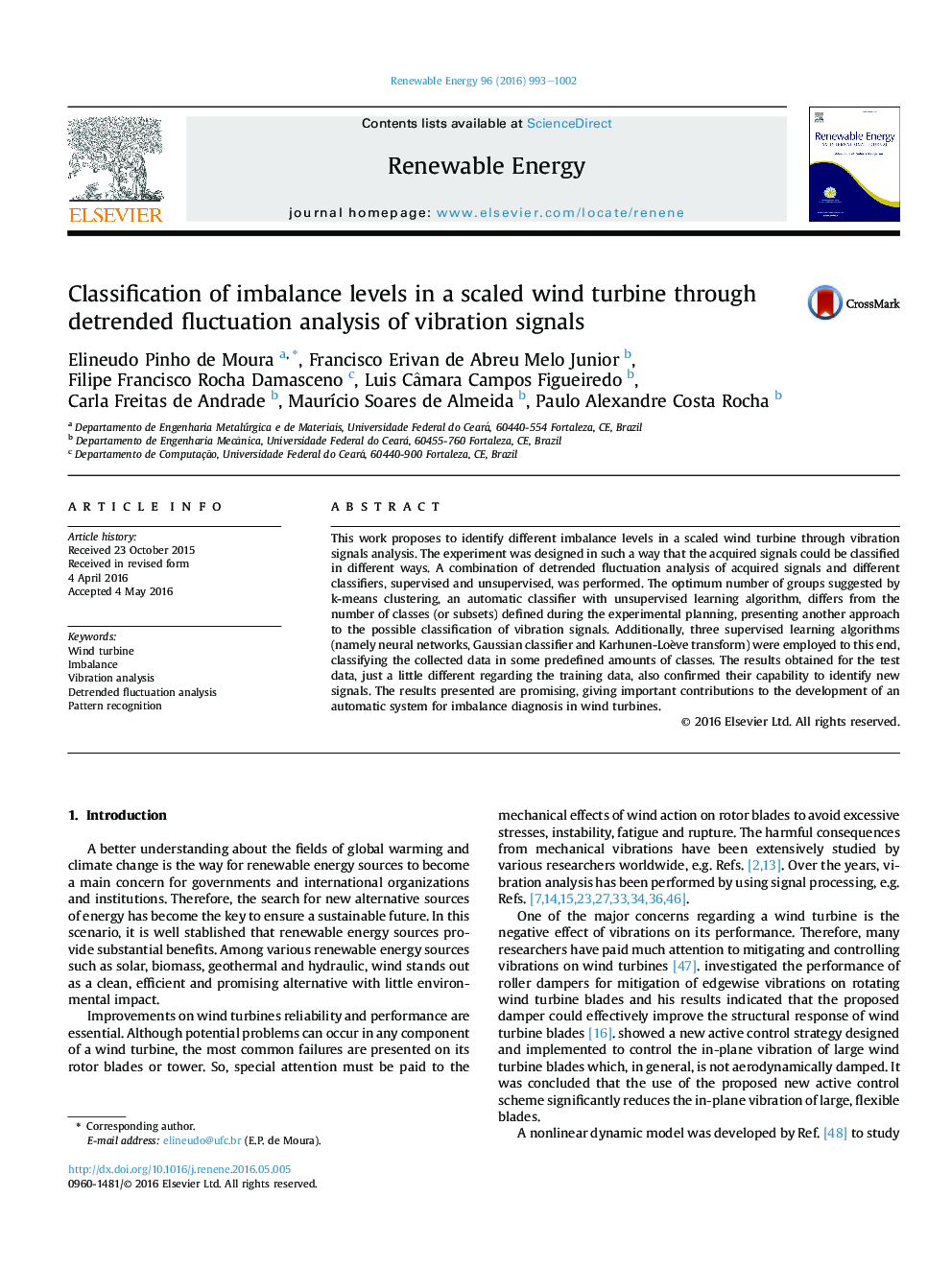| Article ID | Journal | Published Year | Pages | File Type |
|---|---|---|---|---|
| 10293938 | Renewable Energy | 2016 | 10 Pages |
Abstract
This work proposes to identify different imbalance levels in a scaled wind turbine through vibration signals analysis. The experiment was designed in such a way that the acquired signals could be classified in different ways. A combination of detrended fluctuation analysis of acquired signals and different classifiers, supervised and unsupervised, was performed. The optimum number of groups suggested by k-means clustering, an automatic classifier with unsupervised learning algorithm, differs from the number of classes (or subsets) defined during the experimental planning, presenting another approach to the possible classification of vibration signals. Additionally, three supervised learning algorithms (namely neural networks, Gaussian classifier and Karhunen-Loève transform) were employed to this end, classifying the collected data in some predefined amounts of classes. The results obtained for the test data, just a little different regarding the training data, also confirmed their capability to identify new signals. The results presented are promising, giving important contributions to the development of an automatic system for imbalance diagnosis in wind turbines.
Related Topics
Physical Sciences and Engineering
Energy
Renewable Energy, Sustainability and the Environment
Authors
Elineudo Pinho de Moura, Francisco Erivan de Abreu Melo Junior, Filipe Francisco Rocha Damasceno, Luis Câmara Campos Figueiredo, Carla Freitas de Andrade, MaurÃcio Soares de Almeida, Paulo Alexandre Costa Rocha,
